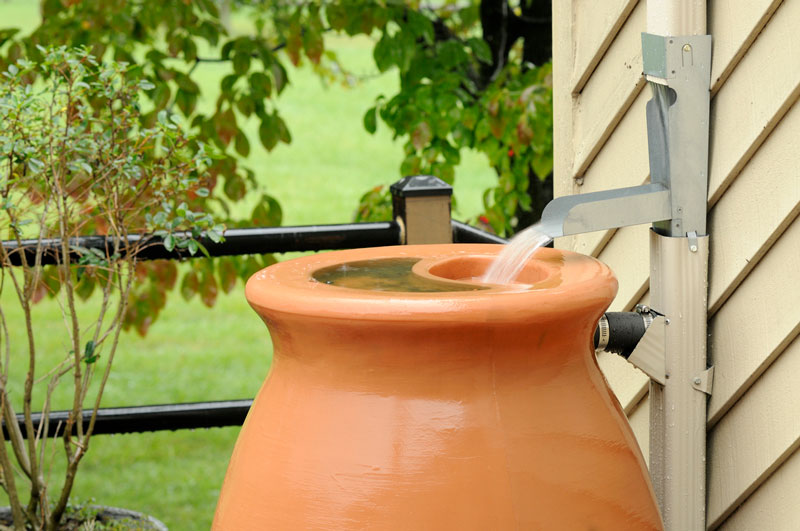Rainwater harvesting is aptly described by the Texas A&M AgriLife Extension Service as “an innovative alternative water supply approach anyone can use. Rainwater harvesting captures, diverts, and stores rainwater for later use.”
Did you know that in Israel, cisterns still stand that were built in 2000 BC to store rainwater runoff for agriculture use?
You can harvest rainwater on many levels: 50 gallons to 5,000 gallons or more. This includes, for instance, a home system that lets you switch to rainwater to provide all of your water needs (my dad has this setup) or one that collects water for your trees and garden and in case of a fire (I have this option.)
Let’s talk about harvesting rainwater for our gardens. We know, at some point this summer, it will get incredibly hot and dry. Having a supply of rainwater on hand will make our gardens smile.
When considering which system is best for you, answer these questions:
- How are you going to get the water to you garden?
- How much water would you like to collect and store?
Equations can help you determine how much water you will “catch” after a rain. A good rule of thumb is that 1 inch of rain from a 1,000 square-foot roof equals 550 gallons.
The following sources go into detail about a variety of systems:
- Take Care of Texas, a conservation campaign from the Texas Commission on Environmental Quality
- "The Texas Manual on Rainwater Harvesting" from the Texas Water Development Board
RAINWATER BARRELS
Rainwater barrels are fairly easy to make. But if you don’t have all of the tools, it can be a challenge. You can purchase rain barrels at your local hardware stores or go to Tank Town in Dripping Springs. They will help in all matters. (My dad says they are wonderful people.)
When installing a rain barrel, place it on a platform. A top over cinder blocks works well. The reason you want to place your rain barrel on a platform is so you can have your spigot as low as possible to utilize all the rainwater. With the barrel off of the ground, you can also place a watering container underneath. Of course, you can connect a hose to your rain barrel for watering. Gravity will supply the pressure.
There are several options for diverting water from your gutters to your barrels or container. A couple include shortening your gutter downspout so it empties directly onto the top of your screened barrel. Or, you can tap into the gutter and run PVC to the top of your containers. A third option is to drill into the side of your downspout to divert rainwater to your collector. Next time, we will discuss other features and options.
JUNE TO-DO LIST
With the crazy weather we have had this year, it is possible you have plants that think it is February while others are already on an August cycle. Be patient with yourself and your plants: They’re confused, too.
- Clean bird feeders. Molded seed will make our feathered friends sick.
- Spread diatomaceous earth in your garden to reduce fleas, ticks, and chiggers. We’ve got enough pesky critters. Be bite-free while pruning and gardening.
- Build up your soil with a seaweed-based application such as Medina Plus or organic liquid kelp.
- Late this month, set out fall tomatoes, peppers, and eggplants in preparation for fall planting.
- A baby bottle brush is a wonderful tool for cleaning your hummingbird feeder. If you have a feeder that the hummers haven’t gone to recently, check to make sure the water/sugar mixture (4:1 ratio) hasn’t fermented in the sun.
- If you plan to have pumpkins in time for Halloween, then start preparing your plot in the garden now. You will need to plant around July 4 for a Halloween harvest.
Till next time. Keep your souls and soles in your garden!
Remember the True Master Gardener: Jesus said, “I am the vine; my Father is the Gardener.” John 15:1
Contact Bill Luedecke at The Luedecke Group Realtors at 512-577-1463 or email him at bill@texasland.net. Contact daughter Martelle Luedecke at 512-769-3179 or luedeckephotography@gmail.com.

